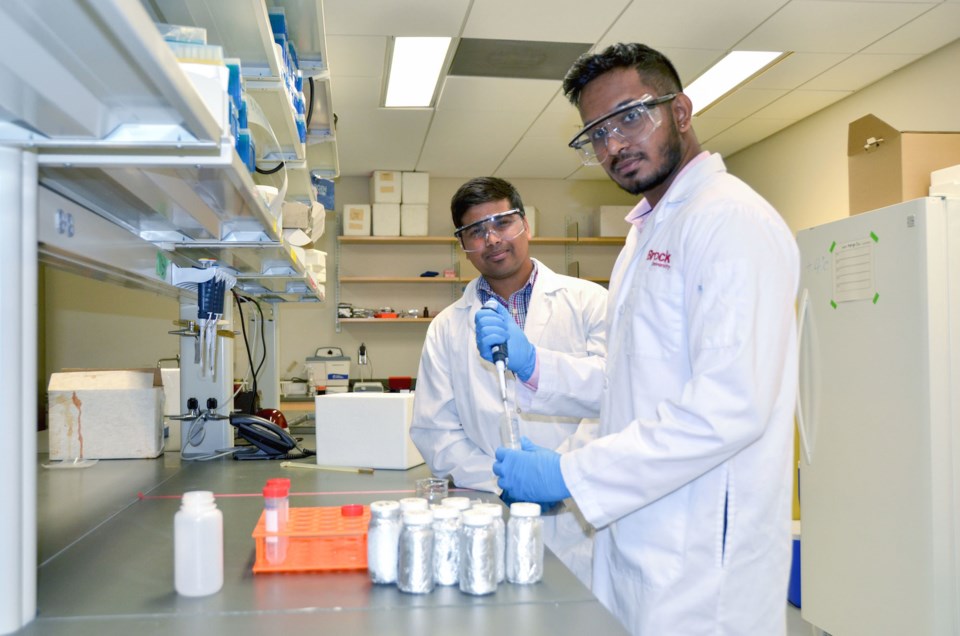NEWS RELEASE
BROCK UNIVERSITY
**********************************
While farms provide food, employment and tranquil scenery, they can also have the unintended effect of altering the chemistry of local water sources.
Brock University fourth-year undergraduate chemistry student Adithya Sethumadhavan is aiming to find out how agriculture-related practices impact streams in the Kawartha Lakes and Durham Region.
Sethumadhavan is testing water samples he collected from 30 sites to look for levels of dissolved organic carbon (DOC) in the water.
“We’re comparing what the carbon fingerprint looks like in forested areas to regions that have been heavily disturbed by agriculture,” he says. “We think there will be more fragments from trees and other organic substances in the molecules of water found in undisturbed areas.”
These tree fragments would include compounds called polyphenols that influence how metals move from land to aquatic environments, says Assistant Professor of Chemistry Vaughn Mangal, Sethumadhavan’s supervisor.
“We are particularly concerned with how metals are transported to aquatic systems after the use of metal-containing fertilizers in agriculture,” he says.
Mangal explains that in natural environments, rainfall carries and deposits carbon molecules from leaves and soil into local water sources, giving the water a “brown tea-like” colour.
But with trees being felled and soils disrupted by constant tilling and crop growth, these and other “human-driven disturbances” transfer organic carbon that was stored on land into the water. Inorganic contaminants from fertilizer use also enter the water.
“Certain micro-organisms consume organic carbon as their main food source,” says Mangal.
The more organic carbon they consume, the more these streams emit greenhouse gases like methane and carbon dioxide — those associated with climate change, he says.
Sethumadhavan hopes the research results, expected early next year, will guide discussions on agricultural and land-use policies.
Tanner Liang, water quality specialist at Kawartha Conservation, says Sethumadhavan and Mangal’s research will help identify locations at high risk of being contaminated by agricultural sources.
“With increased urban development and agriculture in the Kawartha and Peterborough regions, understanding the extent of contamination in southern Ontario watersheds can serve as an informative benchmark of how ecosystems may change, and allow for proactive mitigation,” says Liang.
Although the research is taking place in the Kawartha Lakes and Durham Region, the findings will be equally applicable to Niagara, a region highly dependent on agriculture, says Mangal.
Mangal, who is new to Brock, focuses his research on how fertilizers are impacting soil chemistry and plans to work with farmers to implement sustainable, environmentally driven farming practices.
**********************************



